| Getting Stuck into Adhesives Part 24 Comments4 March 2015 | Admin This is the second of my two part exploration of adhesives and this week, I am looking at wet adhesives which are useful for working on canvas, in journals and when making altered art. To read more about dry adhesives, click here. Wet Adhesives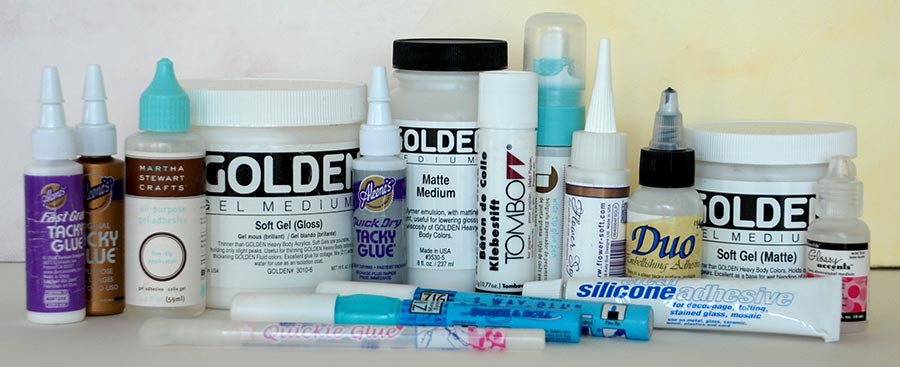
Choosing the right glue for your project can be a challenge given the wide range of types, viscosities and dispenser mechanisms available. So I’m going to take a look at some of the more common glues available to crafters and talk about what each one is good for. PVA 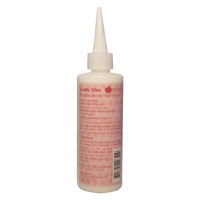 Often referred to as white glue, PVA (polyvinyl acetate) is a water based, non toxic glue which is one of the most widely used general purpose adhesives. Often referred to as white glue, PVA (polyvinyl acetate) is a water based, non toxic glue which is one of the most widely used general purpose adhesives.
It is favoured by bookbinders for gluing book covers and spines due to its archival qualities and flexibility. It is white or pale yellow when wet and dries clear, though very thick applications may be cloudy or translucent when dry. PVA can be very thick, or it can have water or other material added to thin it down, speed up or slow down the drying time. There are hundreds of brands of PVA out there, often with other ingredients added that the manufacturers claim will make their PVA better suited to a specific material or purpose. Unless it has been thinned down a lot, PVA gets tacky quickly which is great for projects where you have to hold something in place while the glue sets. Some brands have ingredients added to improve the tackiness and speed of drying. The viscosity is important as very thick PVA can tear delicate materials like tissue or napkins, but thinner brands can cause paper and card to buckle or warp due to the extra moisture. If you want to use your glue for fine detail work, such as applying glitter, then choose one with a fine pointed applicator, or buy a separate applicator bottle with a fine nozzle. | | Gel mediums 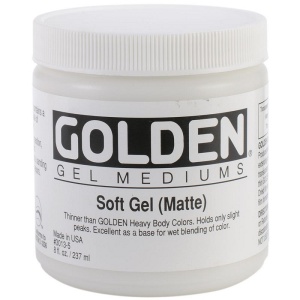 Gel medium was once described to me as acrylic paint without the pigment and like paint it comes in a range of thicknesses, from a thin, brushable gel to a thick buttery consistency that will hold stiff peaks and is suitable for embedding objects. Gel medium was once described to me as acrylic paint without the pigment and like paint it comes in a range of thicknesses, from a thin, brushable gel to a thick buttery consistency that will hold stiff peaks and is suitable for embedding objects.
Gel has very little ‘tack’ so it is not good for projects where you need instant adhesion, but it can be extremely strong once dry. I have seen a canvas with a group of large pebbles and twigs held onto the canvas with heavy gel. The canvas had to lay flat while drying as the gel would not hold the materials in place while vertical, but once dry and hung, the materials were secure. Golden Artists Products do gel in Soft, Regular, Heavy and Extra Heavy, with the soft gel being one of the most popular for paper collage and image transfers. Gel mediums can be used to prepare surfaces prior to painting and they dry to a water resistant finish, so can be used as a resist or to seal work. | | Matte medium Matte medium is generally very thin with the look and feel of cream. It does not have an obvious tackiness or ‘drag’ when brushing and can feel strange at first. I use it for collaging items into my journal or onto canvas as it leaves no obvious surface marks or coating at all and dries completely flat with no shine or sheen. It is ideal for thinner materials like napkins or tissue, apply the medium to the surface, lay down your paper and use your brush to gently smooth it into place, then apply a coat of matte medium over the top. | | Glue ‘n’ Seal (Ranger) As the name suggests, this is a glue that can also be applied as a top layer to varnish or seal your work. Originally available in both gloss and matte versions, the gloss seems to have been withdrawn and the matte has been re-introduced in a slightly smaller jar. I particularly like this product as it almost acts like a hybrid of gel and PVA. It glides nicely and has a very flat finish like a gel, but develops a tackiness quickly to hold things in place. It is great for thin material such as tissue, but I have also used it for thicker cardstock with good results. | 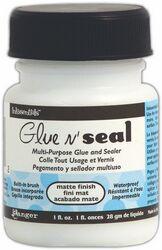
| Glue sticks Glue sticks are a convenient way to glue paper to paper. They are great for travel and I love to use them for collage in my journals. The quality does vary enormously across brands, and some can be so sticky they tear the paper you are trying to glue. My personal favourite these days is the Tombow glue stick which I find glides nicely on most surfaces. Glue sticks work best if you rub over the surface with a small brayer or bone folder after sticking the item down. | | Glue pens There are a number of different types of glue pens which are convenient for travel and useful for getting adhesive onto small intricate shapes such as fancy die cuts. Some glue pens contain a core similar to those in a fibre tip pen which is soaked in glue and nibs can be very fine or very broad. Others contain a reservoir of glue which is dispensed via a metal tip similar to a gel pen or roller ball. I use my glue pens in combination with other types of adhesive, most often when working with die cuts. I will apply scor-tape to the back of any flat part of the die cut, then use the glue pen on any intricate details that I want to be glued flat to the card. | 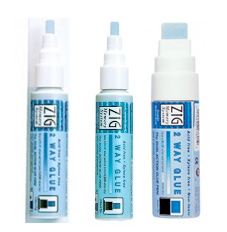 | Size Size is a term that refers to a number of different products used as a preparation layer on painting supports, but it is a name given to the glue that is used by gilders to apply metal leaf. This is a glue that is designed to stay tacky after application, rather than evaporating to a dry finish. There are many craft glues which perform the same function and this is often the type of glue that is found in the glue pens mentioned above. This glue can be an almost opaque creamy colour or blue when first applied, but all dry to a transparent tacky layer. When wet, the glue has more adhesion, but when tacky, it is only suitable for fine materials such as metal leaf, mica powders or glitter. | 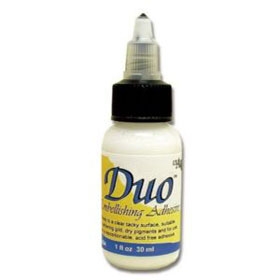 | Silicone Silicone adhesive is most commonly used in 3D decoupage instead of sticky fixers to give height and dimension to layers. Usually supplied in a tube, it can be manipulated while wet to give curves and shapes. Beware of silicone from the DIY stores as it can contain fungicides and other additions that can leach into your paper and leave unsightly marks. Silicone will also react with some inks, causing them to bleed through as well, so if you are creating a decoupage piece for a gift or for sale, do test your materials beforehand. |  | Glaze Products such as Glossy Accents and Diamond Glaze are dimensional adhesives that dry to a clear hard glossy finish. Because of this, they are widely used for decorative accents, but they also make a good strong adhesive for embellishments such as metal charms, buttons and other small 3D items. | 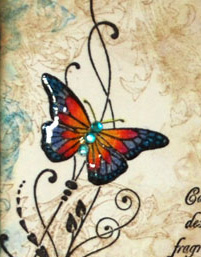
| Hot Glue A hot glue gun is a useful tool if you do a lot of glueing where you need instant adhesion. Sticks of solid glue are fed into the gun and a trigger pushes it through a heated chamber and out of a fine nozzle at the front. The glue will bond most materials, though it should not be used with anything heat sensitive as the glue is hot enough to cause a minor burn when first dispensed. The glue solidifies very quickly on contact with the air and it can be a challenge at first to get used to when to stop pressing the trigger to avoid long thin trails of glue. It's a bit like working with toffee!
I don't often use my glue gun, but I was inspired recently to use it to create stencils to use on my gelli plate after spotting the technique on Youtube! | 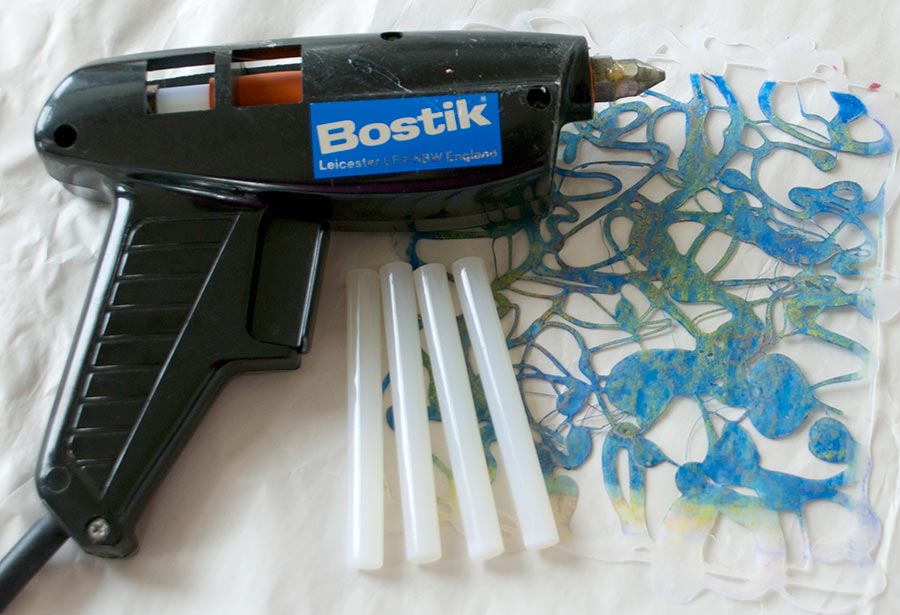
| There are many other glues not covered here as I am only covering adhesives that I am familiar with and use. Always read up about glues before using, particularly if they contain solvents or other chemicals, and follow any safety guidelines. If you are not sure which glue to use for a given project, you can try the website thistothat.com which will give some useful recommendations, though it is US based so you may have to search for equivalent brands in your own country. Happy sticking! 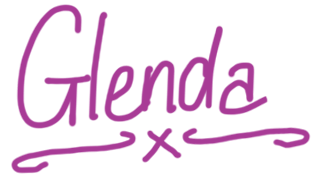
| | Survey | How do you mount your unmounted stamps? Cling-a-ling: | 30% | | Tack 'n' Peel: | 5% | | Glue stick: | 4% | | Spray Mount: | 6% | | Double sided tape: | 2% | | Other cling cushion: | 10% | | Don't mount them: | 44% | |
|
|
.jpg)
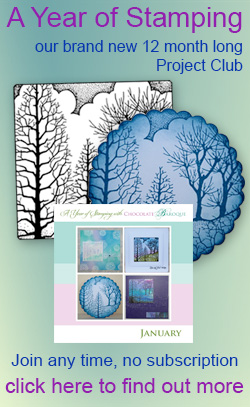










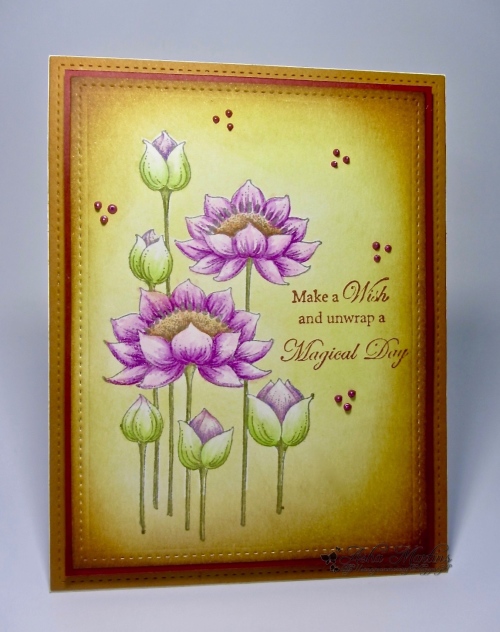
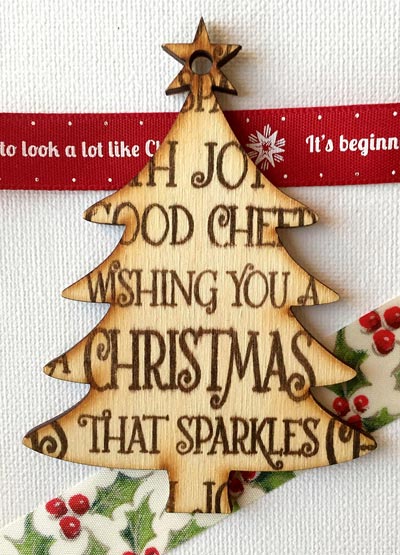
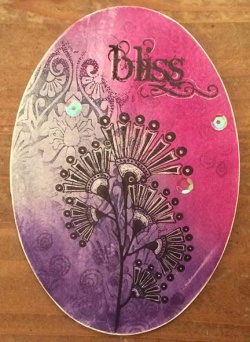


Thanks Glenda for both articles on adhesives, I find the area of wet adhesives and mediums a minefield but you have made it a lot clearer.
Thank you Glenda that was very useful.
Suexxx
Thanks Glenda. You've helped to demystify the subject a lot.
Glenda, a clear guide to adhesives. I have most and use most but this has given me pointers where they can be utilised in other ways and for that, a big Thank You.